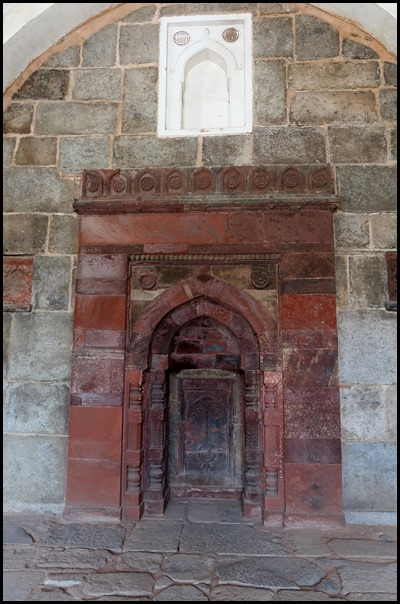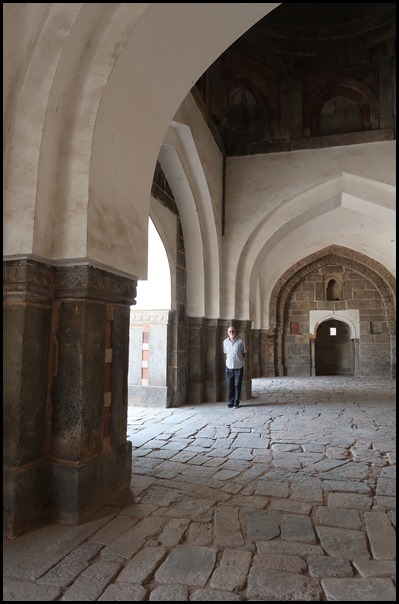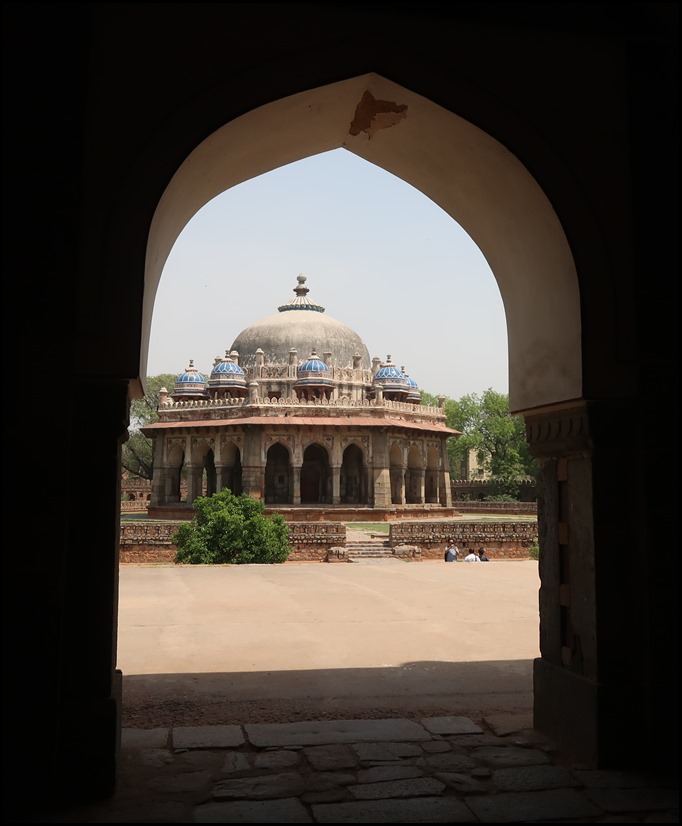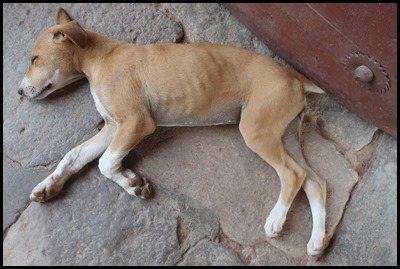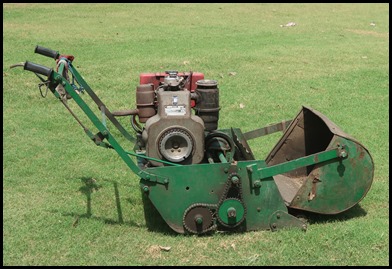Isa Khan's Tomb

|
Isa Khan's Walled Complex for
His Tomb and Mosque
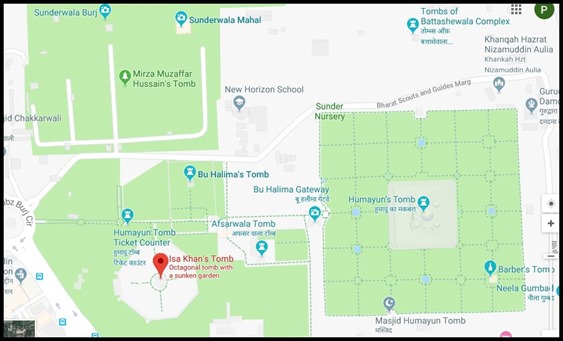 Inside the massive area of tombs, we visited Humayun’s tomb first,
having passed the well maintained gateway to Isa Khan’s tomb.
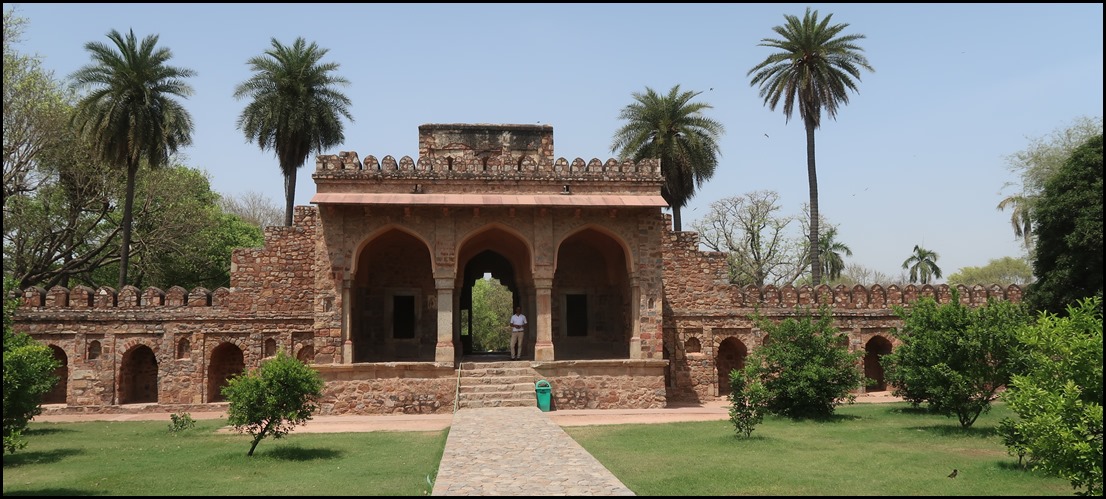 Inside the gate we saw the inner
entrance of Isa Khan’s Complex.
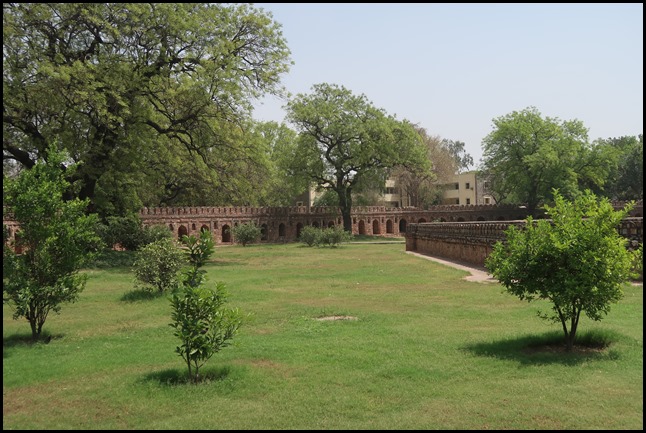 Once inside, we were in a huge walled garden.
Wiki
says: - Isa Khan Niazi
was a Pashtun noble (Iranian ethnic group) in the courts of Sher Shah Suri and
his son Islam Shah Suri, of the Sur dynasty, who fought the Mughal
Empire.
Isa Khan Niazi was born in 1453 and his last brother was born in 1478. He died in Delhi in 1548 at the age of 95. The time of 1451 – 1525 was the golden period for these khans. It was the time when Lodhis (of Afghanistan) completely dominated the subcontinent (Hindustan)). Isa Khan Niazi was a prominent member among the ruling family. He was in the same tribal unit of nobles as Ibrahim Lodhi, Sher Shah Suri. Most of these families were attached with the Delhi sultanate. There, a contention arose between Isa Khan Niazi and Sher Shah Suri which ended in mutiny. Isa Khan's tomb was built during his lifetime (ca 1547-48 AD). It is situated near the site of the Mughal Emperor Humayun’s Tomb complex in Dehli which was built later (between 1562-1571 AD). This octagonal tomb has distinct ornamentation in the form of canopies, glazed tiles and lattice screens, and a deep veranda surrounding it, which is supported by pillars. It stands to the south of the Bu Halima Garden at the entrance of the complex. An inscription on a red sandstone slab indicates that the tomb is that of Masnad Ali Isa Khan, son of Umar Khan, the Chief chamberlain, and was built during the reign of Islam Shah Suri, son of Sher Shah, in 1547-48 A.D. On 5 August 2011, restoration work on this tomb led to the discovery of India's oldest sunken garden. Isa Khan’s garden tomb is considered the earliest example of an Indian sunken garden attached to a tomb. This concept was later developed at Akbar’s Tomb and at the Taj Mahal. At the edge of the complex, across from the tomb, lies a mosque with noticeable mihrabs. It is known as Isa Khan's Mosque. It was built at the same time as the tomb. Many of the architectural details present in these structures (such as the tomb being placed in a walled garden enclosure) can be seen evolved to a grander scale in the main Humayun's tomb. Ancestry: Isa Khan has descendants still living in the western border region of Pakistan, mostly in Isakhel, Mianwali. The town of Isakhel was founded about 1830 by Ahmad Khan, ancestor of the present Khans of Isakhel, who were the acknowledged heads of the trans-Indus Niazai; and it takes its name from Isa Khan. The municipality was created in 1875.  This enclosure includes
the tomb and a mosque, both built during his own
lifetime. The octagonal tomb pre-dates Humayun’s tomb by twenty years. It has
striking ornamentation in the form of canopies, glazed tiles, and lattice
screens. It is the only surviving
octagonal enclosed tomb with walls, mosque and gateway intact.
Conservation works at the site commenced in January 2011
following extensive documentation, including 3D high-definition surveying,
condition assessment, archival research and peer review of the conservation
plan.
An enormous amount of work was
required to remove some 325,000 cubic feet of earth from the site in order to
restore the landscape to its original level while being careful not to destroy
any archaeology. Conservation and landscape works are carried out with due care
of authenticity of material and building tradition and have restored the
integrity of the Humayun’s Tomb World Heritage Site. And a wonderful job
they have done.
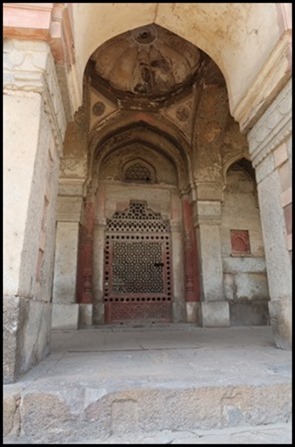 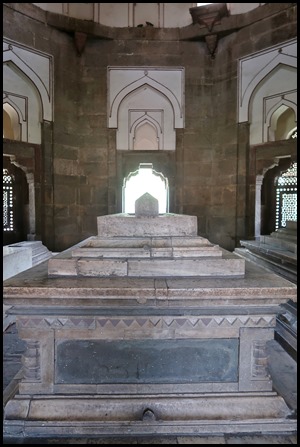 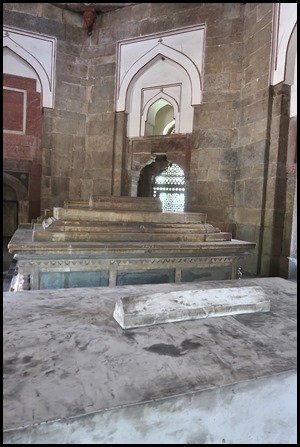 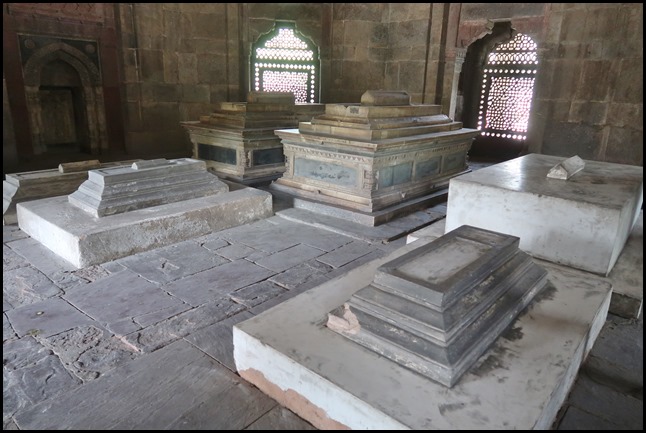 Inside,
the tombs of Isa Khan and members of his
family.
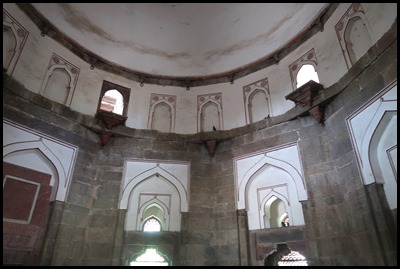 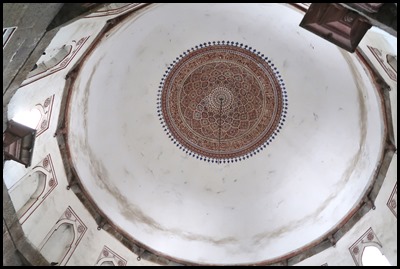 Looking up.
 Along the western side of
the enclosure, the three-bay-wide mosque has a grand
red sandstone central bay and striking mihrabs (a niche in the wall of a mosque, at the point nearest to Mecca,
towards which the congregation faces to pray). Until the early 20th
century, an entire village had been settled in the enclosure.
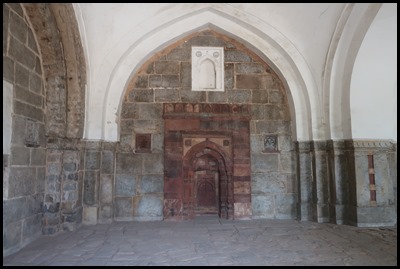 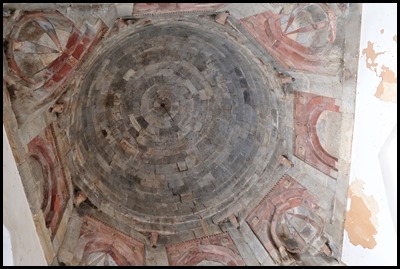
Inside the mosque.
Looking from the mosque toward the tomb.
Must be lunch time........... ALL IN ALL ADORED IT, A
REALLY LOVELY PLACE
FABULOUS PLACE - SO
PEACEFUL |
